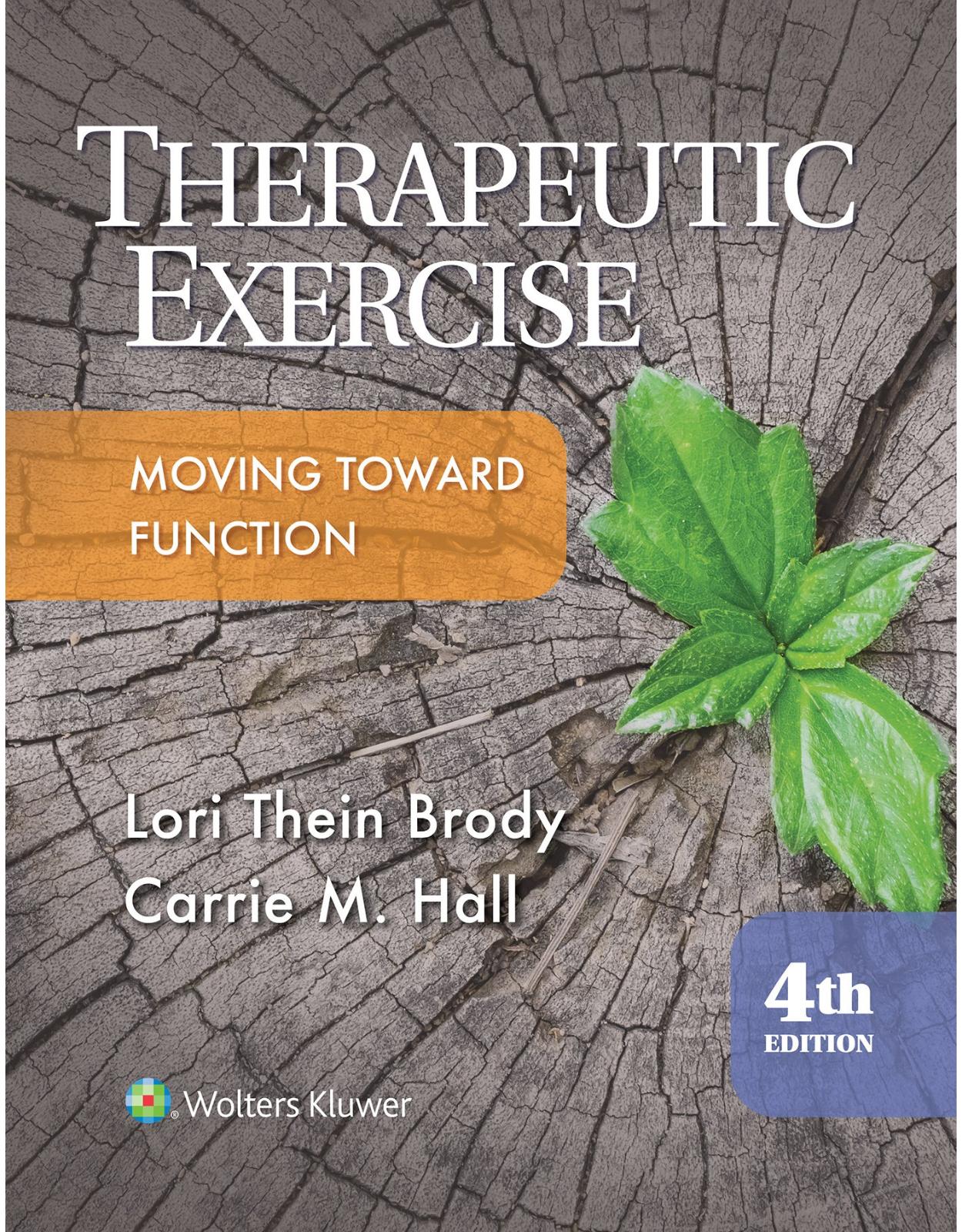
Therapeutic Exercise
Produs indisponibil momentan. Pentru comenzi va rugam trimiteti mail la adresa depozit2@prior.ro sau contactati-ne la numarul de telefon 021 210 89 28 Vedeti mai jos alte produse similare disponibile.
Disponibilitate: Acest produs nu este momentan in stoc
Autor: Lori Brody
Editura: LWW
Limba: Engleza
Nr. pagini: 976
Coperta: Hardcover
Dimensiuni: 21.84 x 4.32 x 27.94 cm
An aparitie: 1 May 2017
Description:
This updated 4th Edition of Therapeutic Exercise does more than provide a listing of exercises—it builds practice preparedness and clinical reasoning skills by focusing on the rationale behind exercise selections and progressions. Now in striking full color and more accessible than ever, the text emphasizes return to function, aligns with the most recent ICF framework, and reflects the latest strategies in physical therapy. This edition continues to show readers how to use therapeutic exercise and related interventions to close the gap between current and desired performance, while incorporating new research and updated pedagogy.
Table of Contents:
Unit 1: Foundation of Therapeutic Exercise
Chapter 1: Introduction to Therapeutic Exercise and the Model of Functioning and Ability
Definition of Physical Therapy
Therapeutic Exercise Intervention
The Language of Health: Abilities and Disabilities
Terminology of the Biopsychosocial Model of Functioning and Disability
International Classification of Functioning, Disability, and Health
Part 1: Functioning and Disability
Part 2: Contextual Factors
Application of the Model to Physical Therapist Practice
Health Conditions
Impairments of Body Functions and Structures
Activity Limitations, Participation Restrictions, and Quality of Life
Contextual Factors and Interventions
Prevention and the Promotion of Health, Wellness, and Fitness
Summary
Key Points
Chapter 2: Patient Management
Patient Management Model
Examination
Evaluation
Diagnosis
Prognosis and Plan of Care
Intervention
Outcome
Modification
Clinical Decision-Making
Therapeutic Exercise Intervention
Therapeutic Exercise Intervention Model
Summary
Exercise Modification
Adjunctive Interventions
Key Points
Chapter 3: Strategies for Improving Therapeutic Exercise Outcomes
Patient Education: Definition and Scope
Key Components of Patient-Related Instruction
Patient–Clinician Communication
Patient-Related Instruction in Home Exercise Prescription
Cognitive Domain: Informing and Educating
Affective Domain: Adherence and Motivation
Psychomotor Domain: Motor Learning
Applications: Home Exercise Prescription
Considerations in Exercise Prescription
Determining Exercise Levels
Formulating the Program
Key Points
Chapter 4: Prevention and the Promotion of Health, Wellness, and Fitness
The Context for Primary Prevention
Definitions
Prevention, Health Promotion, and Health Education
Physical Fitness, Exercise, and Physical Activity
Wellness, Lifestyle, and Quality of Life
Measurement of Wellness
Health Promotion and Wellness-Based Practices
From Illness to Wellness
The Use of Screening as an Examination Tool Within a Wellness-Based Practice
Starting a Wellness-Based Practice
Physical Well-Being: Physical Activity Programs
Conducting Health-Related Physical Fitness Assessments
Establishing Physical Activity Interventions
Key Points
Unit 2: Impairments of Body Functions and Therapeutic Exercise
Chapter 5: Impaired Muscle Performance
Definitions
Strength
Power and Work
Endurance
Muscle Actions
Physical Factors Affecting Muscle Performance
Fiber Type
Fiber Diameter
Muscle Size
Force–Velocity Relationship
Length–Tension Relationship
Muscle Architecture
Clinical Considerations
Dosage
Program Design
Training Specificity
Neurologic Adaptation
Muscle Fatigue
Muscle Soreness
Life Span Considerations
Cognitive Aspects of Performance
Effects of Alcohol
Effects of Medications
Causes of Decrease Muscle Performance
Neurologic Pathology
Muscle Strain
Disuse and Deconditioning
Length-Associated Changes
Physiologic Adaptations to Training
Strength and Power
Endurance
Examination and Evaluation of Muscle Performance
Classification of Resistance Exercise
Isometric Exercise
Dynamic Exercise
Methods of Resistance Training
Manual Resistance
Pulley System
Variable Resistance Machines
Elastic Resistance
Free Weights
Isokinetic Devices
Body Weight
Therapeutic Exercise Intervention for Impaired Muscle Performance
Program Initiation
Program Progression
Therapeutic Exercise Intervention for Prevention, Health Promotion, and Wellness
Dosage for Strength Training
Dosage for Power Training
Plyometric Exercise
Dosage for Endurance Training
Dosage for the Advanced or Elite Athlete
Precautions and Contraindications
Key Points
Chapter 6: Impaired Aerobic Capacity/Endurance
Aerobic Capacity and Endurance
Definitions
Normal and Abnormal Responses to Acute Aerobic Exercise
Physiologic and Psychological Adaptations to Cardiorespiratory Endurance Training
Causes of Impaired Aerobic Capacity/Rehabilitation Indications
Examination/Evaluation of Aerobic Capacity
Patient/Client History
Systems Review
Screening Examination
Tests and Measures
Therapeutic Exercise Intervention
Mode
Dosage
Precautions and Contraindications
Graded Exercise Testing Contraindications and Supervision Guidelines
Supervision During Exercise
Patient-Related Instruction/Education and Adjunctive Interventions
Life Span Issues
Guidelines for Cardiovascular Endurance Training in the Young
Guidelines for Cardiovascular Endurance Training in the Elderly
Key Points
Chapter 7: Impaired Range of Motion and Joint Mobility
Continuum of Mobility
Morphology and Physiology of Normal Mobility
Immobility, Immobilization, and Remobilization
Mobility Examination and Evaluation
Range of Motion Intervention For Impaired Mobility
Subsystems of the Movement System
Considerations in Choosing Mobility Activities
Range of Motion
Stretching
Indications
Principles and Considerations in Stretching
Neurophysiology of Stretching
Static Stretching
Ballistic Stretching
Proprioceptive Neuromuscular Facilitation Stretching
Dynamic Stretching
Effects of Stretching
Stretching and Joint Contractures
Joint Mobilization to Increase Mobility
Biomechanics of Joint Mobilization
Mobilization Grades
General Procedures
Applications to Specific Joints
Neural Mobility
Self-Mobilization
Mobility Exercise Dosage
Sequence
Frequency, Intensity, and Duration
Hypomobility Exercise Precautions and Contraindications
Causes and Effects of Hypermobility
Therapeutic Exercise Intervention for Hypermobility
Stabilization Exercises
Exercise Dosage
Hypermobility Exercise Precautions and Contraindications
Lifespan Issues
Adjunctive Agents
Key Points
Chapter 8: Impaired Balance and Mobility
Definitions
Physiology of Balance
Biomechanical Contributions
Contributions of the Sensory Systems
Neural Integration and Processing of Sensory Information
Generating Motor Output—Movement Strategies
Control of Walking—Navigation
Higher-Level Influences
Causes of Impaired Balance
Examination and Evaluation of Impaired Balance and Mobility
Biomechanical Domain
Sensory Strategies Domain
Movement Strategies Domain
Dynamic Control Domain
Cognitive Domain
Affective Domain
Determining Risk for Falling
Treating Impaired Balance
Diagnosis and Prioritization
Customization
Environmental Context
Mode
Motor Learning
Intervention Strategies for Specific Systems—Examples
Sequencing Considerations
Feedback
Expanded Ecological Model of Balance Rehabilitation
Precautions and Contraindications
Patient Education
Falls—A Significant Problem
Effects of Training on Balance
Key Points
Chapter 9: Impaired Posture and Movement
Definitions
Posture
Standard Posture
Deviations in Posture
Movement
Contributors to Impaired Posture and Movement
Range of Motion
Muscle Length
Joint Mobility
Muscle Performance
Pain
Anatomic Impairments and Anthropometric Characteristics
Psychologic Impairments
Lifespan Considerations
Environmental Influences
Examination and Evaluation
Posture
Movement
Intervention
The Movement System
Activity and Dosage
Patient-Related Instruction and Adjunctive Interventions
Key Points
Chapter 10: Pain
Definitions
Physiology of Pain
Sources of Pain
Pain Pathways
Pain Theory
Examination and Evaluation
Pain Scales
McGill Pain Questionnaire
Disability and Health-Related Quality of Life Scales
Therapeutic Exercise Intervention for Pain
Acute Pain
Chronic Pain
Therapeutic Exercise Guidelines for Patients with Chronic Pain
Adjunctive Agents
Transcutaneous Electrical Nerve Stimulation
Heat
Cold
Medication
Special Considerations in Chronic Pain: Complex Regional Pain Syndrome, Fibromyalgia, and Chronic Fatigue Syndrome
Complex Regional Pain Syndrome
Fibromyalgia Syndrome
Chronic Fatigue Syndrome
Therapeutic Exercise Interventions for Common Impairments
Impaired Muscle Power Functions
Exercise Tolerance Functions: Impaired Aerobic Capacity
Mobility of Joint Functions: Impaired Range of Motion
Muscle Endurance Functions: Impaired Posture
Emotional Functions: Impaired Response to Emotional Stress
Precautions and Contraindications
Pacing
Pharmacological and Psychological Intervention
Key Points
Unit 3: Special Physiologic Considerations in Therapeutic Exercise
Chapter 11: Soft-Tissue Injury and Postoperative Management
Physiology of Connective Tissue Repair
Microstructure of Connective Tissues
Response to Loading
Phases of Healing
Principles of Treating Connective Tissue Injuries
Restoration of Normal Tissue Relationships
Optimal Loading
Specific Adaptations to Imposed Demands
Preventing Complications
Management of Impairments Associated with Connective Tissue Dysfunction and Localized Inflammation
Sprain: Injury to Ligament and Capsule
Strain: Musculotendinous Injury
Application of Treatment Principles
Tendinopathy
Articular Cartilage Injury
Contusion
Management of Impairments Associated with Fractures
Classification of Fractures
Application of Treatment Principles
Management of Impairments Associated with Bony and Soft-Tissue Surgical Procedures
Soft-Tissue Procedures
Bony Procedures
Management of Impairments Associated with Joint Arthroplasty
Key Points
Chapter 12: Therapeutic Exercise for Arthritis
Pathology
Osteoarthritis
Rheumatoid Arthritis
Exercise Recommendations for Prevention and Wellness in OA and RA
Therapeutic Exercise Intervention For Common Impairments
Pain and Fatigue
Impaired Mobility and ROM
Impaired Muscle Performance
Impaired Aerobic Capacity
Special Considerations in Exercise Prescription and Modification
Patient Education
Key Points
Chapter 13: Therapeutic Exercise in Obstetrics
Physiologic Changes Related to Pregnancy
Endocrine System
Cardiovascular System
Respiratory System
Musculoskeletal System
Therapeutic Exercise Intervention in Pregnancy
Uncomplicated Antepartum Pregnancy
High-Risk Antepartum
Therapeutic Exercise Intervention for Common Impairments
Nerve Compression Syndromes
Other Impairments
Therapeutic Exercise Intervention for Wellness in Pregnancy
Precautions and Contraindications
Exercise Guidelines
Exercise Intensity
Exercise Classes
Key Points
Unit 4: Sample Specialties of Therapeutic Exercise Intervention
Chapter 14: Kinetic Chain Applications in Functional Movement
Understanding the Kinetic Chain
Posture and Alignment
Muscle Performance
Neuromuscular Control
Examination and Evaluation
Qualitative Examination
Quantitative Examination
Choosing Therapeutic Movements to Enhance Kinetic Chain Function
Applying Therapeutic Movement
Key Points
Chapter 15: Proprioceptive Neuromuscular Facilitation
History and Background
Philosophy and Principles of PNF
PNF Physiology and Applied Concepts
Research in PNF to Increase Muscle Length
Research in PNF to Improve Muscle Performance
PNF Procedures
Manual Therapeutic Exercise Using PNF Procedures
Evaluation and Treatment Implementation
Direct Treatment
Indirect Treatment
Manual Therapeutic Exercise Using PNF Techniques
Movement
Stability
Flexibility
Key Points
Chapter 16: Aquatic Therapeutic Exercise
Physical Properties of Water
Buoyancy
Hydrostatic Pressure
Viscosity
Physiologic Responses to Immersion
Effects of Hydrostatic Pressure
Effects of Water Temperature
Physiologic Responses to Exercise While Immersed
Examination and Evaluation for Aquatic Rehabilitation
Therapeutic Exercise Intervention
Mobility Impairment
Muscle Strength/Power/Endurance Impairment
Balance Impairment
Aquatic Rehabilitation to Treat Activity Limitations
Coordinating Land and Water Activities
Patient-Related Education
Precautions/Contraindications
Key Points
Unit 5: Functional Approach to Therapeutic Exercise of the Lower Extremities
Chapter 17: The Lumbopelvic Region
Review of Anatomy and Kinesiology
Myology
Gait
Examination and Evaluation
Patient History
Screening Examination
Tests and Measures
Therapeutic Exercise Intervention for Common Impairments of Body Functions
Aerobic Capacity Impairment
Balance and Coordination Impairment
Muscle Performance Impairment
Range of Motion, Muscle Length, and Joint Mobility
Pain
Posture and Movement Impairment
Therapeutic Exercise Intervention for Common Diagnoses
Lumbar Disk Herniation
Spinal Stenosis
Spondylolysis and Spondylolisthesis
Key Points
Chapter 18: The Pelvic Floor
Review of Anatomy and Kinesiology
Skeletal Muscles
Pelvic Diaphragm Muscles
Pelvic Floor Function
Physiology of Micturition
Impairments of Body Structures
Birth Injury
Neurologic Dysfunction
Impairments of Mental Functions
Motivation
Sexual Abuse
Examination/Evaluation
Risk Factors
Screening Questionnaires
Results of the Internal Examination
Patient Self-Assessment Tests
Ultrasound Imaging for PFM Dysfunction
Therapeutic Exercise Interventions for Common Physiologic Impairments
Impaired Muscle Performance
Active PFEs
Pain
Joint Mobility and Range of Motion (Including Muscle Length) Impairments
Posture Impairment
Coordination Impairment
Clinical Classifications of Pelvic Floor Muscle Dysfunction
Underactive PFM
Overactive PFM
Incoordination Dysfunction
Visceral Dysfunction
Therapeutic Exercise Interventions for Common Diagnoses
Incontinence
Pelvic Organ Prolapse
Chronic Pelvic Pain
Levator Ani Syndrome
Coccygodynia
Vulvodynia
Vaginismus
Nonrelaxing Puborectalis Syndrome
Dyspareunia
Adjunctive Interventions
Biofeedback
Basic Bladder Training
Scar Mobilization
Externally Palpating the Pelvic Floor Muscles
Key Points
Chapter 19: The Hip
Impairments of Body Structures
Angles of Inclination and Torsion
Center Edge Angle or Angle of Wiberg
Leg Length Discrepancy
Cam and Pincer Morphology
Examination and Evaluation
History
Lumbar Spine Clearing Examination
Other Clearing Tests
Gait and Balance
Joint Mobility and Integrity
Muscle Performance
Pain and Inflammation
Posture and Movement
Range of Motion and Muscle Length
Work (Job/School/Play), Community, and Leisure Integration or Reintegration (Including Instrumental Activities of Daily Living)
Special Tests
Therapeutic Exercise Interventions for Common Physiologic Impairments
Pain
Muscle Performance
ROM, Muscle Length, Joint Mobility, and Integrity Impairments
Balance
Posture and Movement Impairment
Therapeutic Exercise Interventions for Common Diagnoses
Osteoarthritis
Iliotibial Band–Related Diagnoses
Nerve Entrapment Syndromes
Key Points
Chapter 20: The Knee
Review of Anatomy and Kinesiology
Anatomy
Kinematics
Kinetics
Impairments of Body Structures
Genu Valgum
Genu Varum
Examination and Evaluation
Patient/Client History
Tests and Measures
Therapeutic Exercise Intervention for Body Function Impairments
Mobility Impairment
Muscle Performance Impairments
Therapeutic Exercise Intervention for Common Diagnoses
Ligament Injuries
Treatment of Ligament Injuries
Fractures
Treatment of Fractures
Meniscal Injuries
Treatment
Degenerative Arthritis Problems
Articular Cartilage Lesions
Surgical Procedures
Interventions for Degenerative Arthritis Problems
Tendinopathies
Patellar Tendinopathy
Iliotibial Band Syndrome
Patellofemoral Pain Syndrome
Key Points
Chapter 21: The Ankle and Foot
Common Foot Types
Subtalar Varus
Forefoot Varus
Forefoot Valgus
Ankle Equinus
Examination and Evaluation
Patient/Client History
Balance
Joint Integrity and Mobility
Muscle Performance
Pain
Posture
Range of Motion and Muscle Length
Impairments of Body Structures
Other Examination Procedures
Therapeutic Exercise Intervention for Common Impairments of Body Functions
Balance Impairment
Muscle Performance
Pain
Posture and Movement Impairment
ROM, Muscle Length, Joint Integrity, and Mobility
Swelling
Therapeutic Exercise Intervention for Common Ankle and Foot Diagnoses
Ligament Sprains
Ankle Fractures
Functional Nerve Disorders
Plantar Fasciitis
Posterior Tibial Tendon Dysfunction
Medial Tibial Stress Syndrome
Achilles Tendinosis
Postoperative Management
Adjunctive Interventions
Adhesive Strapping
Wedges and Pads
Biomechanical Foot Orthotics
Heel and Full Sole Lifts
Key Points
Unit 6: Functional Approach to Therapeutic Exercise for the Upper Extremities
Chapter 22: The Temporomandibular Joint
Review of Anatomy and Kinesiology
The Temporomandibular Joint Structures
Associated Structures
Kinesiology
Examination and Evaluation
Subjective History
Screening Exam for the TMJ
Therapeutic Exercise for Common Impairments of Body Functions
Mobility Impairments
Posture Impairments
Swallowing and Respiratory Impairments
The Rocabado 6 × 6
Therapeutic Exercise for Common Diagnoses
Capsulitis and Retrodiskitis
Internal Derangement of the Disk
Degenerative Joint Disease/Osteoarthritis
Postoperative Physical Therapy Following Surgical Intervention
Adjunctive Therapies
Key Points
Chapter 23: The Cervical Spine
Review of Anatomy and Kinesiology
Muscles
Examination and Evaluation
History and Clearing Tests
Physical Examination
Therapeutic Exercise Interventions for Common Impairments of Body Functions
Impaired Muscle Performance
Mobility Impairment
Posture Impairment
Therapeutic Exercise Interventions for Common Diagnoses
Disk Dysfunction
Cervical Sprain and Strain
Neural Entrapment
Cervicogenic Headache
Key Points
Chapter 24: The Thoracic Spine
Examination and Evaluation
History
Systems Review
Tests and Measures
Therapeutic Exercise Interventions for Common Impairments of Body Structures and Functions
Impaired Muscle Performance
Impaired ROM, Muscle Length, and Joint Mobility/Integrity
Pain
Impaired Posture and Motor Function
Therapeutic Exercise Intervention for Common Diagnoses
Prevention and Intervention in Patients with Osteoporosis
Exercise Management of Parkinson Disease
Thoracic Outlet Syndrome
Key Points
Chapter 25: The Shoulder Girdle
Review of Anatomy and Kinesiology
Examination and Evaluation
Patient/Client History
Clearing Examinations
Motor Function (Motor Control and Motor Learning)
Muscle Performance
Pain
Peripheral Nerve Integrity
Posture
ROM, Muscle Length, Joint Mobility, and Joint Integrity
Work (Job/School/Play), Community, and Leisure Integration or Reintegration (Including Instrumental ADLs)
Therapeutic Exercise Interventions for Common Impairments of Body Structures and Functions
Pain
ROM and Joint Mobility Impairments
Impaired Muscle Performance
Posture and Movement Impairment
Therapeutic Exercise Interventions for Common Diagnoses
Rotator Cuff Disorders
Pathomechanics
Pathogenesis
Glenohumeral Hypermobility/Instability
Frozen Shoulder
Adjunctive Interventions: Taping
Scapular Corrections
Prevention of Allergic Reaction
Key Points
Chapter 26: The Elbow, Forearm, Wrist, and Hand
Anatomy
Elbow and Forearm
Wrist
Hand
Regional Neurology
Kinesiology
Wrist
Hand
Examination and Evaluation
History and Observation
Mobility Examination
Muscle Performance Examination
Other Tests
Therapeutic Exercise Interventions for Common Impairments of Body Functions
Mobility of Joint Functions: Impaired Range of Motion
Impaired Muscle Power Functions
Endurance Impairment
Pain and Inflammation Impairment
Muscle Endurance Functions: Impaired Posture and Movement
Therapeutic Exercise Interventions for Common Diagnoses
Osteoarthritis and Rheumatoid Arthritis
Cumulative Trauma Disorders
Nerve Injuries
Musculotendinous Disorders
Bone and Joint Injuries
Stiff Hand and Restricted Motion
Key Points
Unit 7: Case Studies
Appendix 1: Red Flags: Recognizing Signs and Symptoms
Appendix 2: Red Flags: Potentially Serious Symptoms and Signs in Exercising Patients
Appendix 3: 2016 PAR-Q +: The Physical Activity Readiness Questionnaire for Everyone
Index
| An aparitie | 1 May 2017 |
| Autor | Lori Brody |
| Dimensiuni | 21.84 x 4.32 x 27.94 cm |
| Editura | LWW |
| Format | Hardcover |
| ISBN | 9781496302342 |
| Limba | Engleza |
| Nr pag | 976 |
-
1,05700 lei 95100 lei

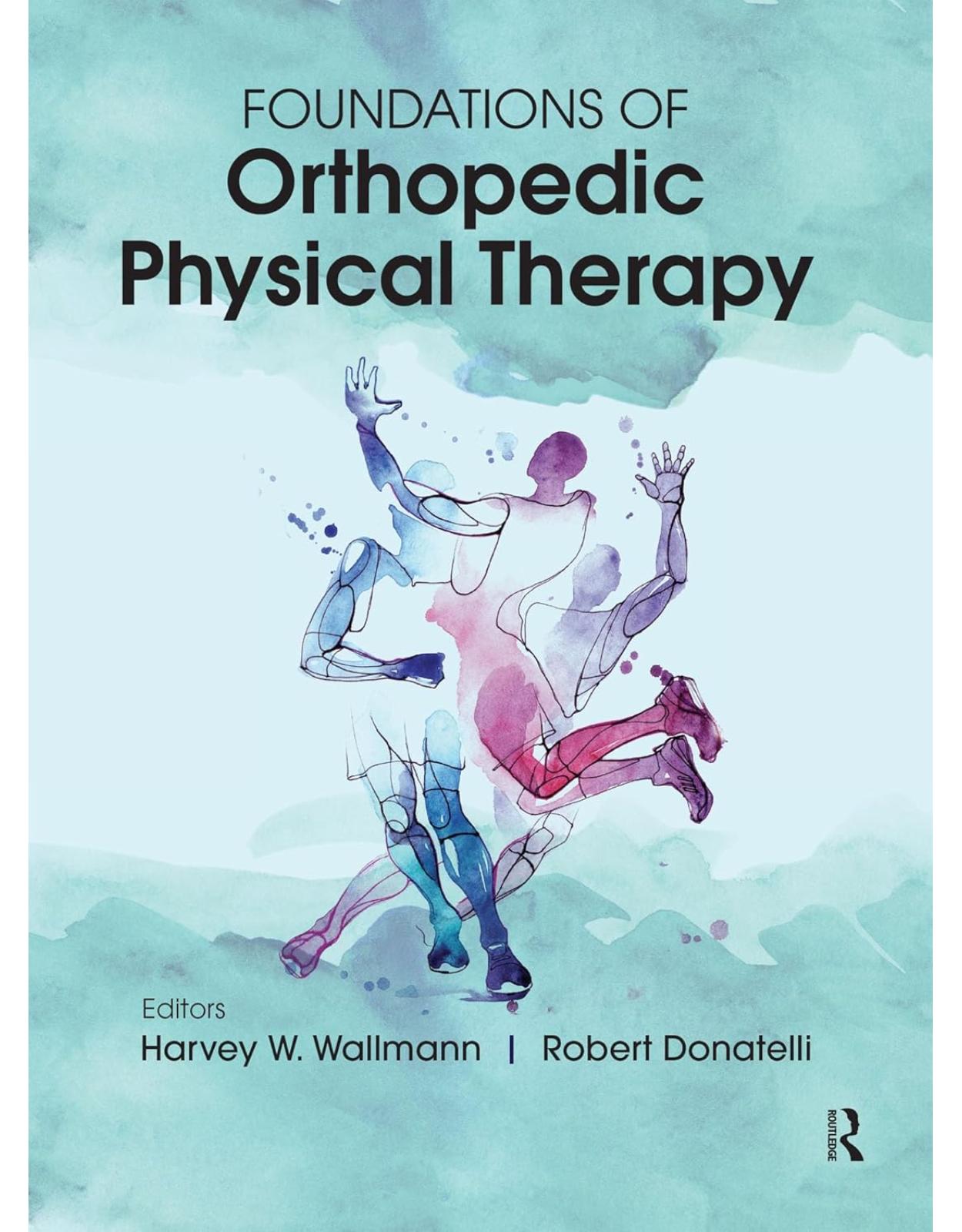

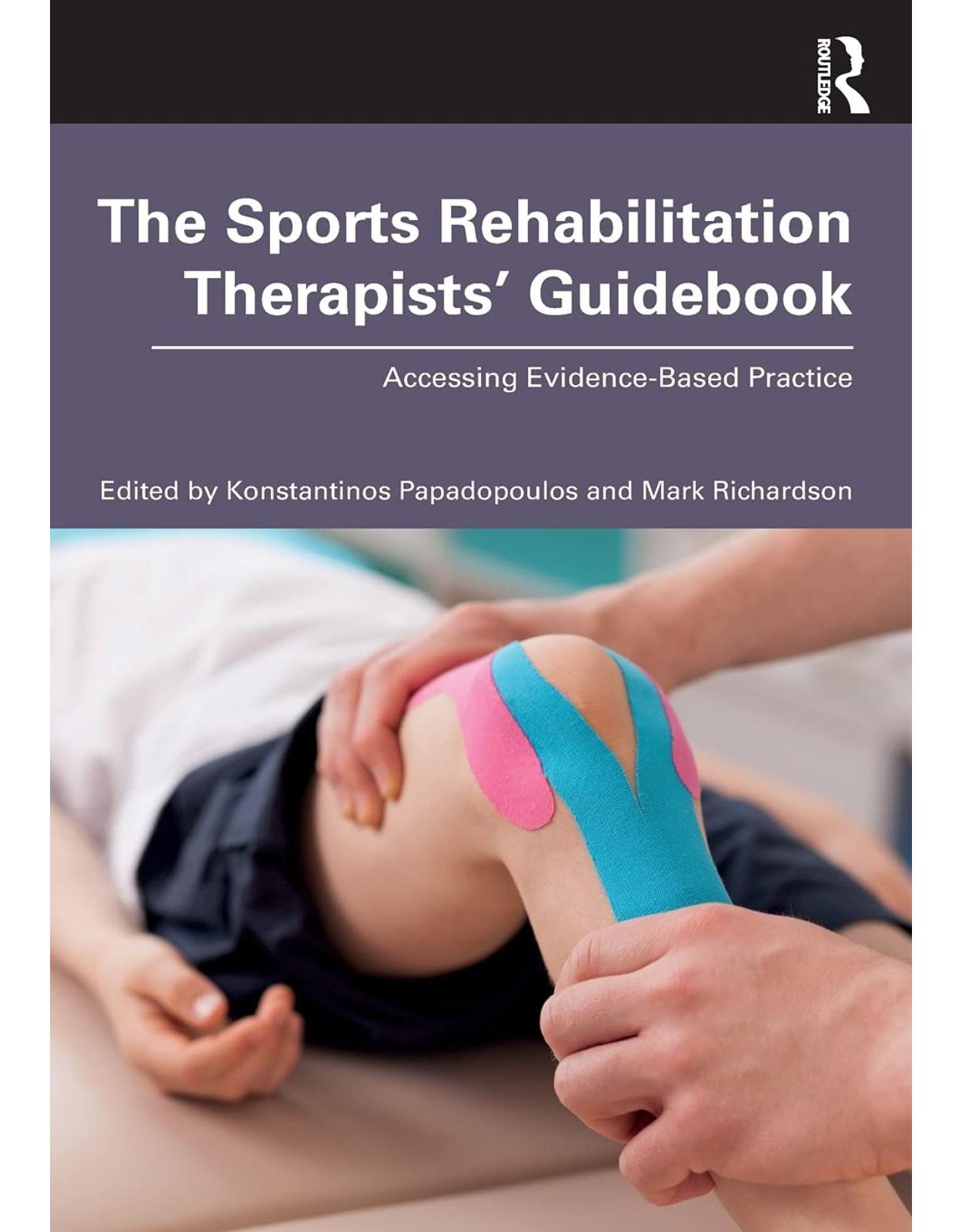
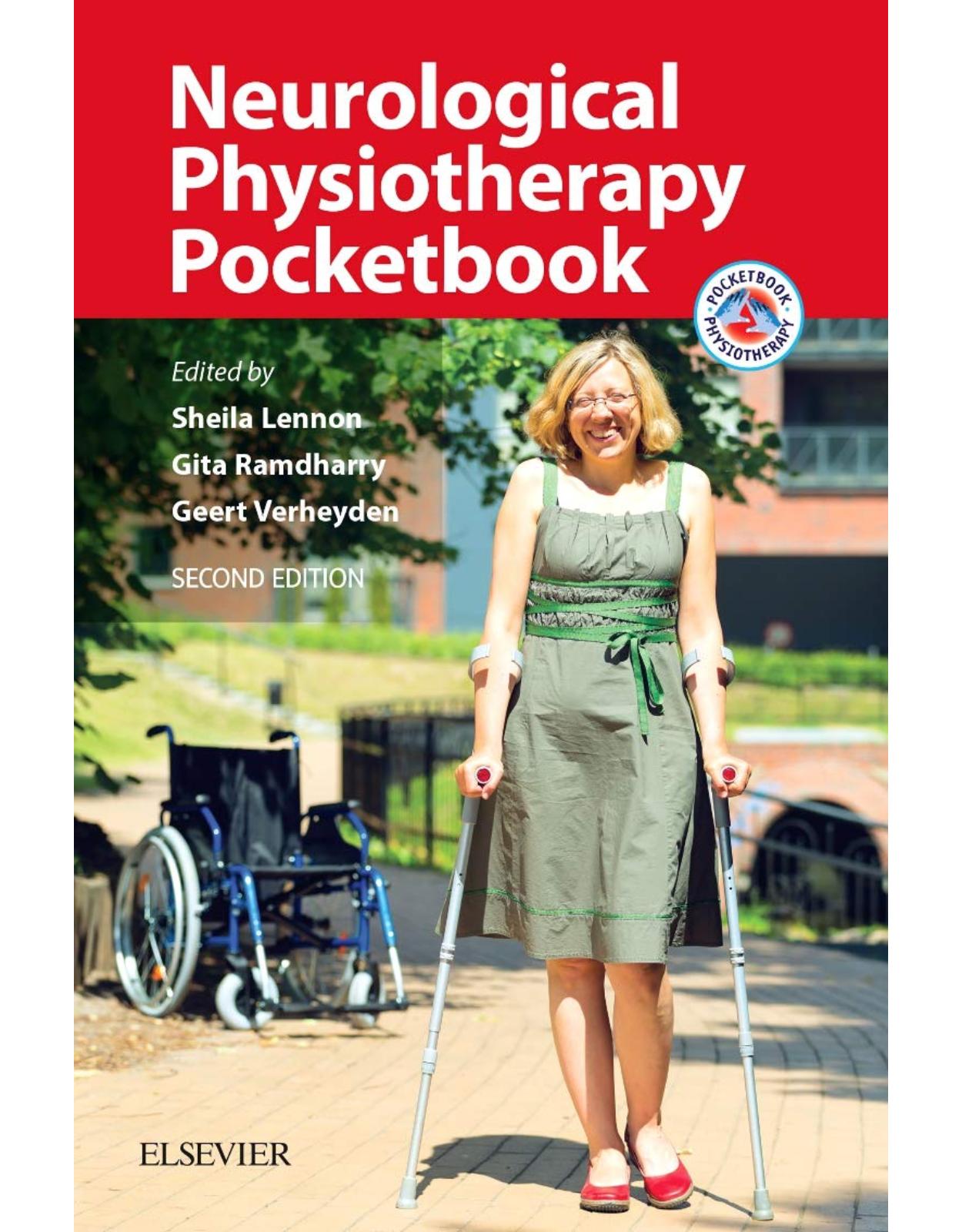
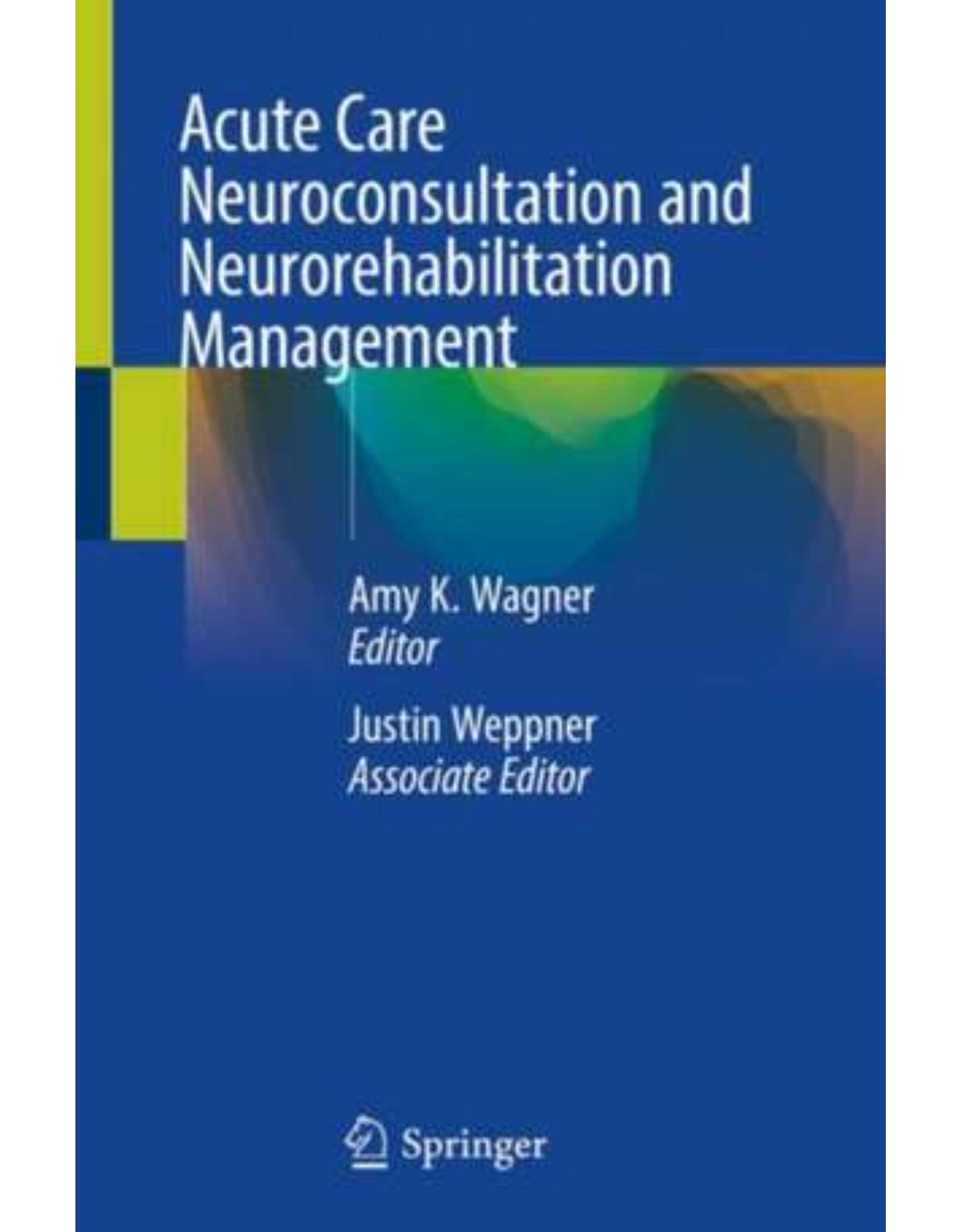
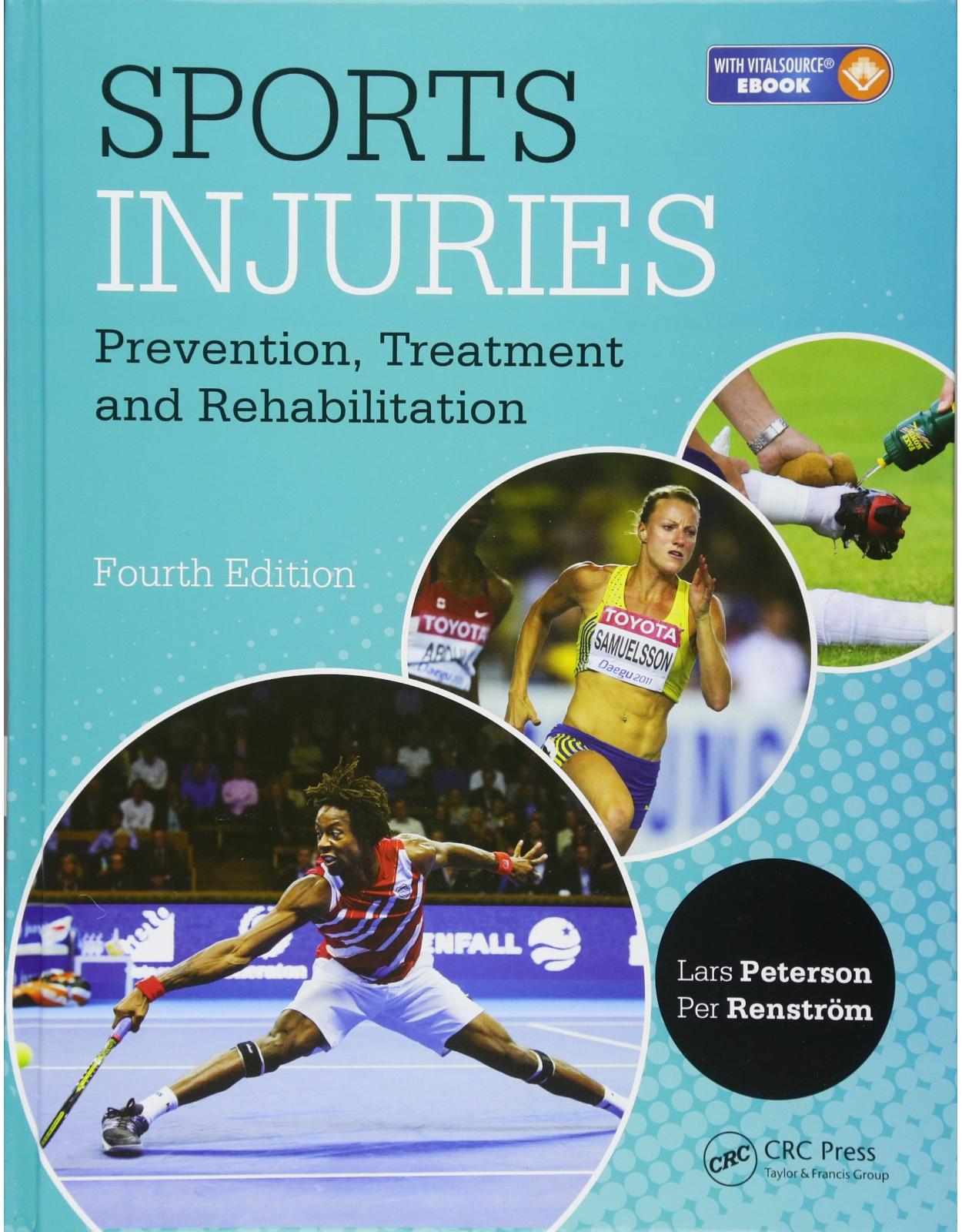
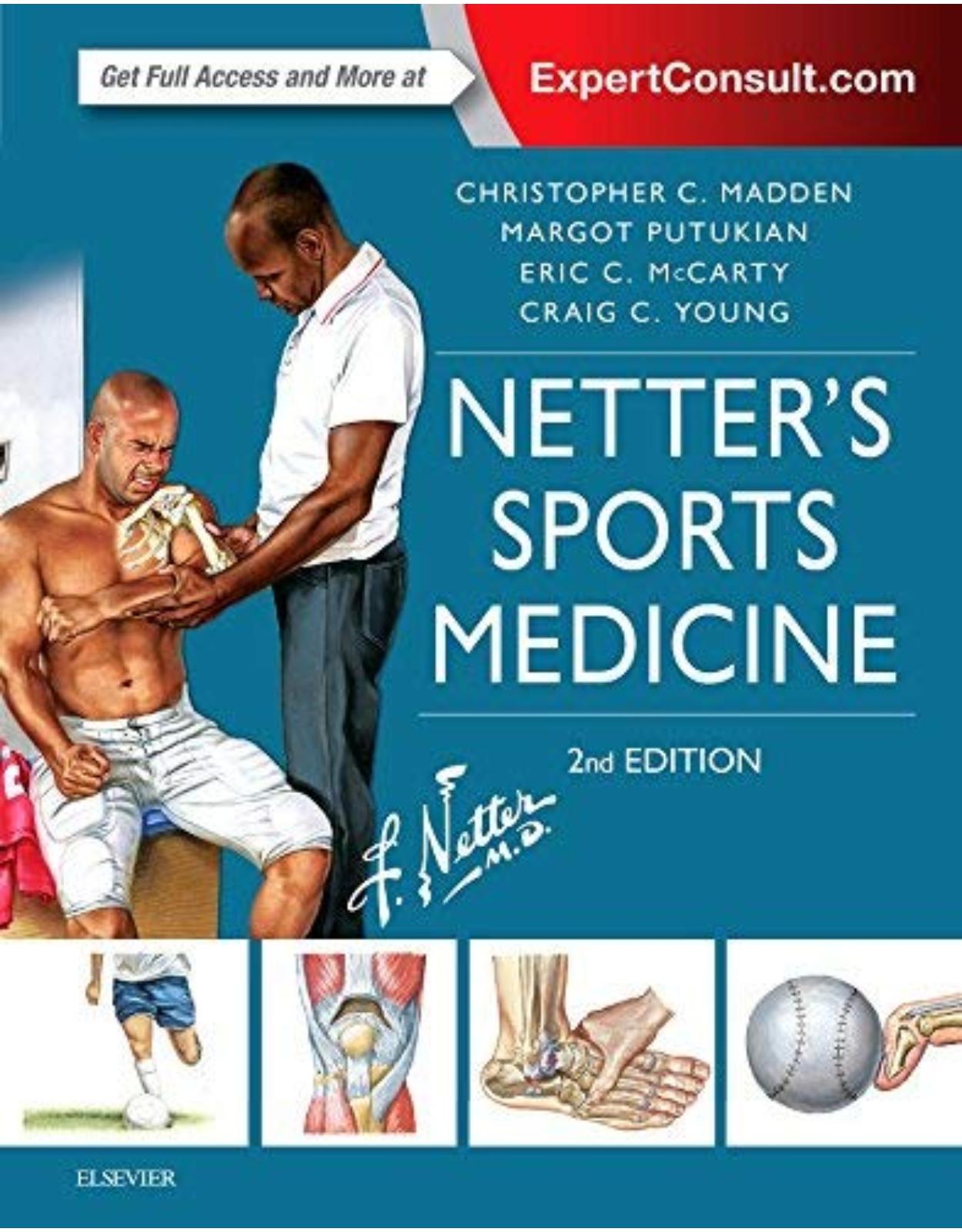
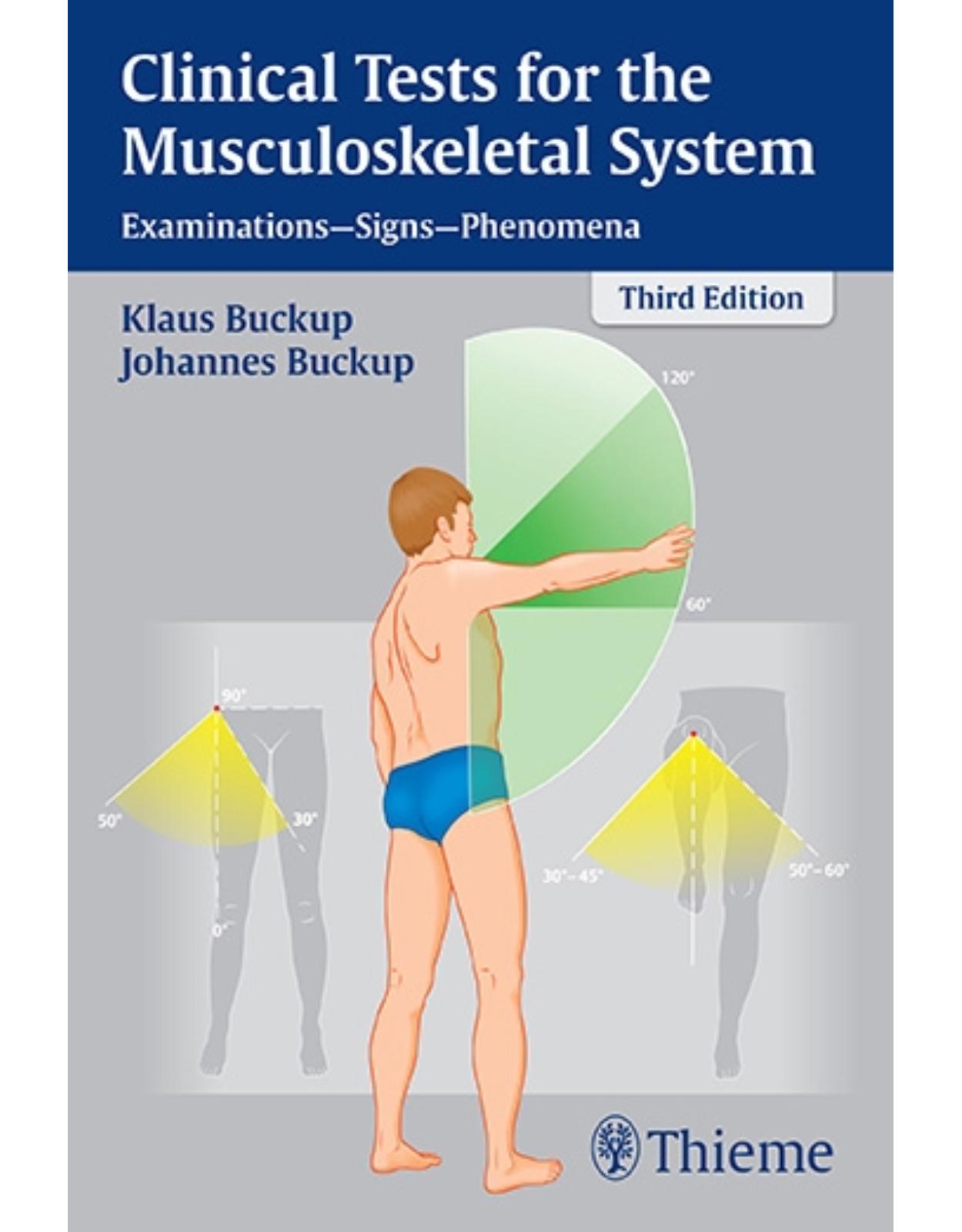
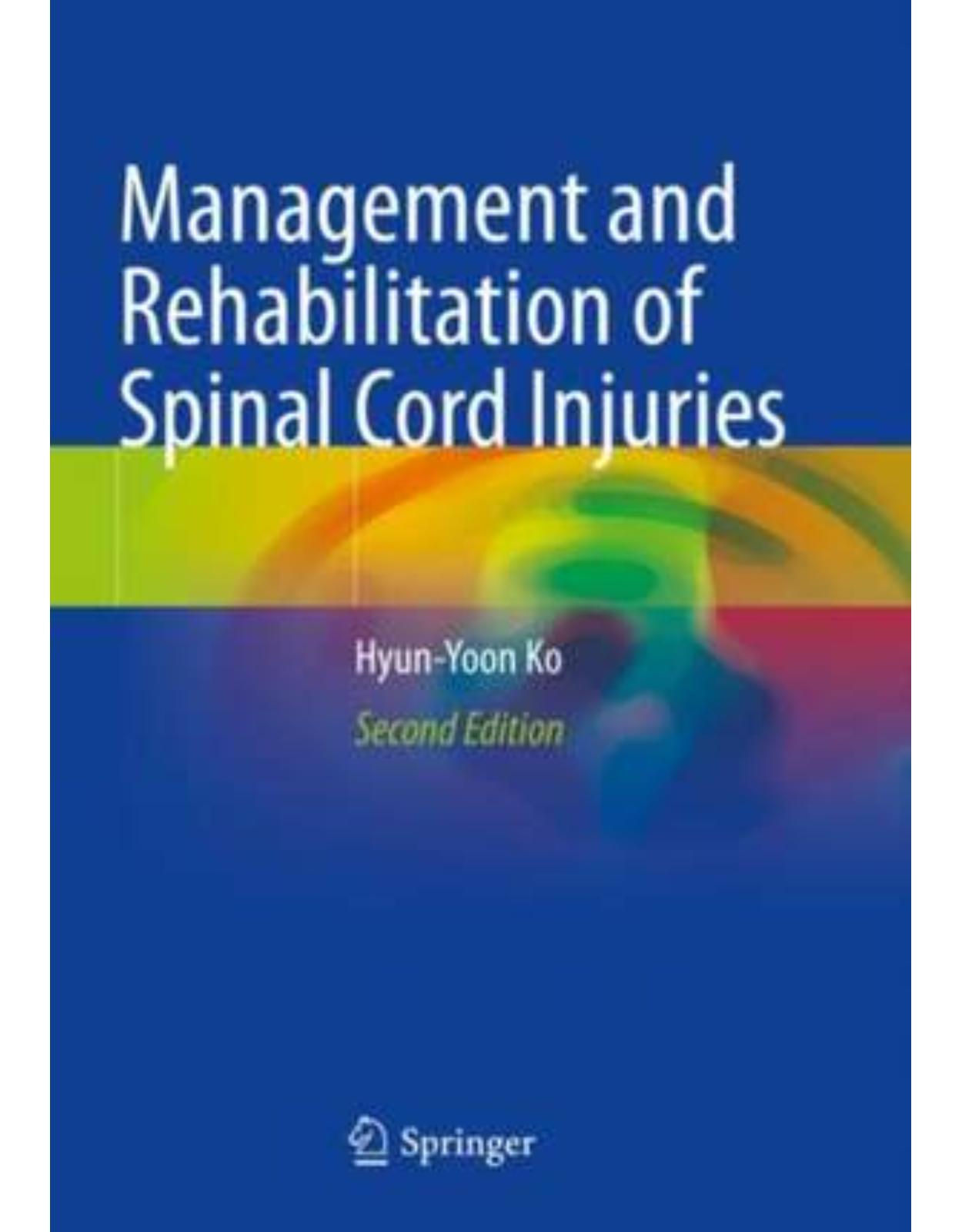
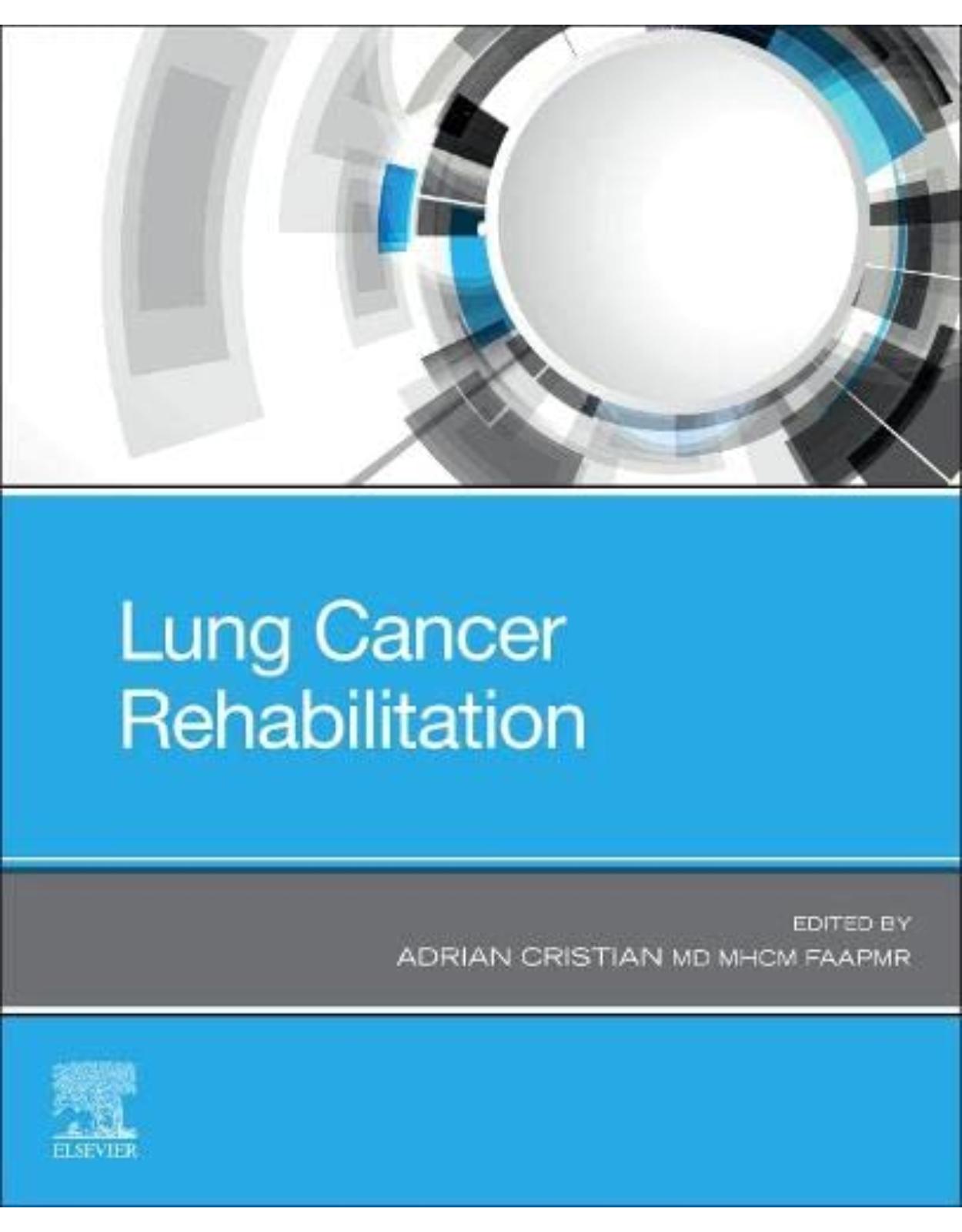
Clientii ebookshop.ro nu au adaugat inca opinii pentru acest produs. Fii primul care adauga o parere, folosind formularul de mai jos.